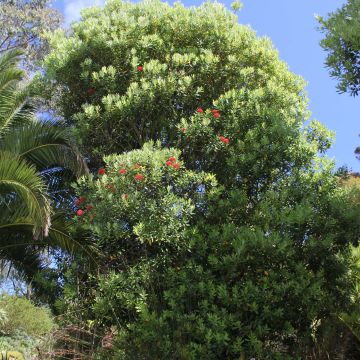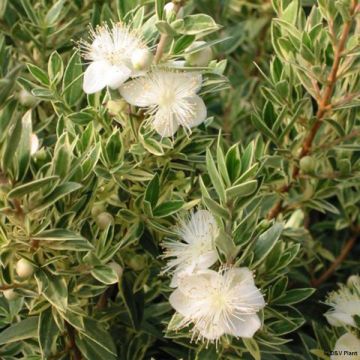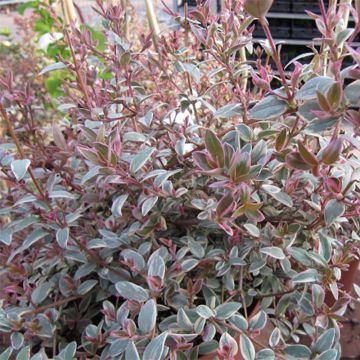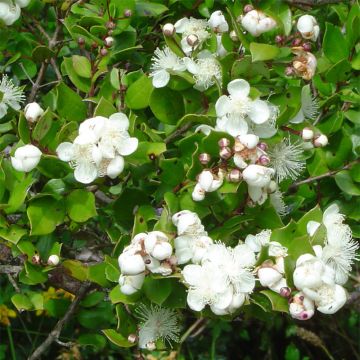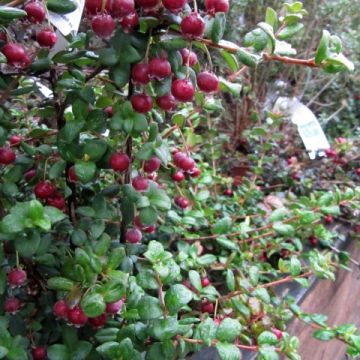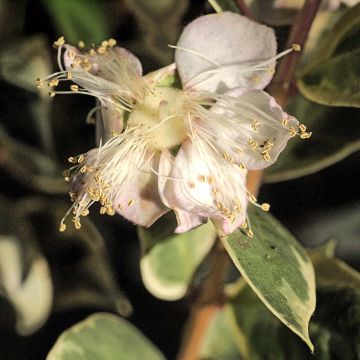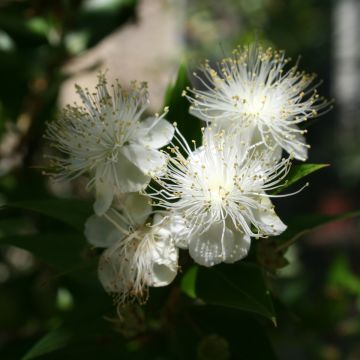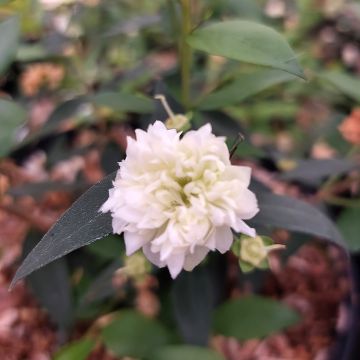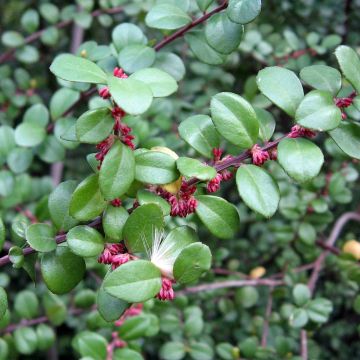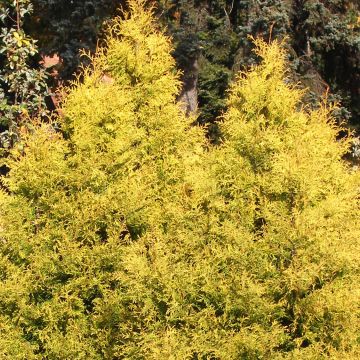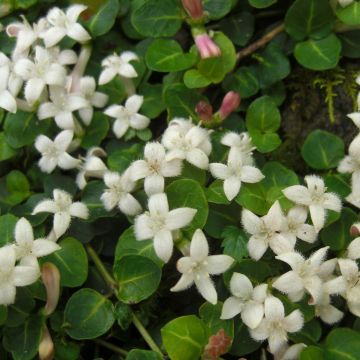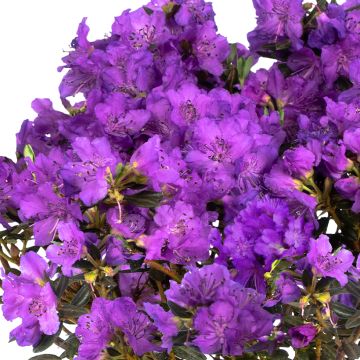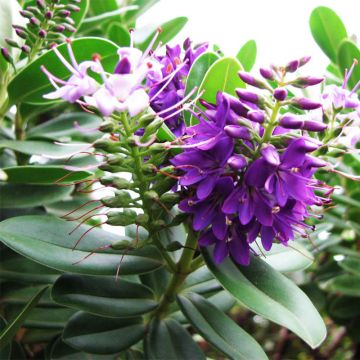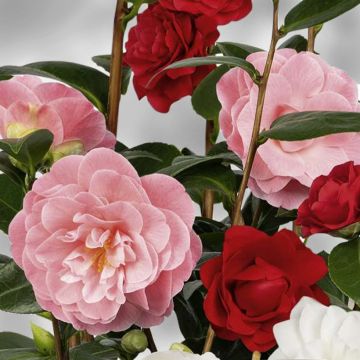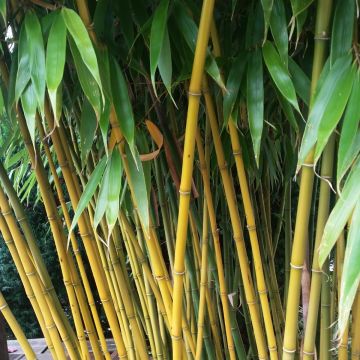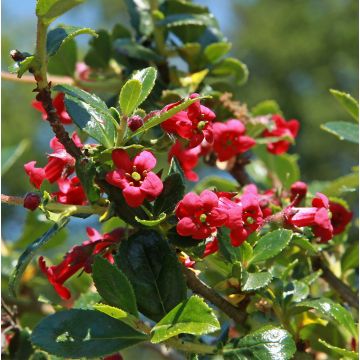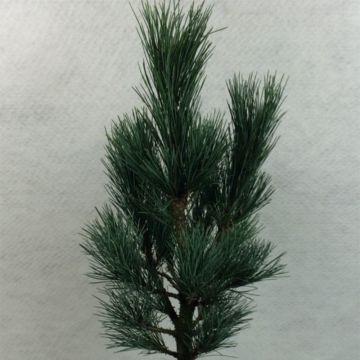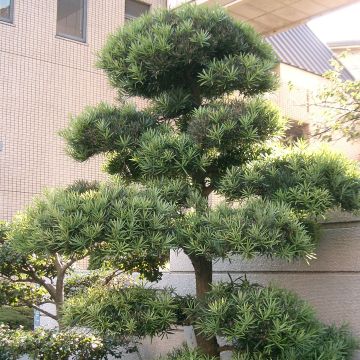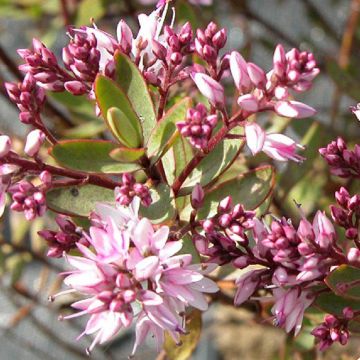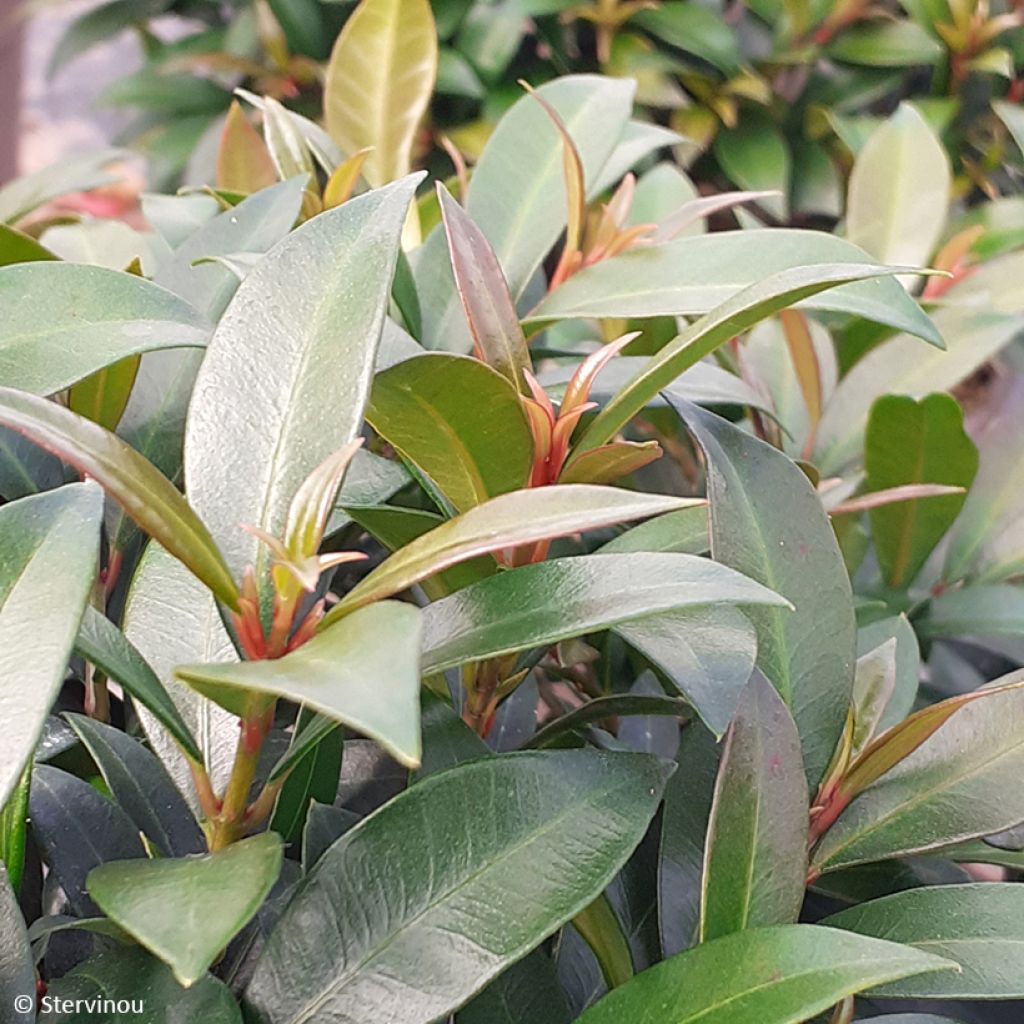

Eugenia myrtifolia Compacta
Eugenia myrtifolia Compacta
Eugenia myrtifolia Compacta
Australian Brush Cherry, Scrub Cherry, Creek Lily Pilly, Creek Satinash, Watergum, Wilson's Satinash
This item cannot be shipped to the selected country
Delivery charge from €5.90
More information
Schedule delivery date,
and select date in basket
This plant carries a 24 months recovery warranty
More information
We guarantee the quality of our plants for a full growing cycle, and will replace at our expense any plant that fails to recover under normal climatic and planting conditions.
From €5.90 for pickup delivery and €6.90 for home delivery
Express home delivery from €8.90.
Does this plant fit my garden?
Set up your Plantfit profile →
Description
Eugenia myrtifolia 'Compacta' is an ornamental bush suited to very mild climates. Its upright and bushy habit as well as its dense and evergreen foliage make it an ideal hedge plant in the mildest areas. The reddish young shoots are particularly highlighted by the mature, beautiful shiny dark green vegetation. In summer, the bush produces pleasant white flowers which turn into bright pink fruits in autumn, both ornamental and edible, to be enjoyed raw or in jams. In colder climates, this bush can be grown in a large container to be overwintered in a bright, frost-free room.
The Eugenia belongs to the Myrtaceae family, rich in about 3000 species of trees and bushes, mainly in subtropical to tropical zones, and to some extent in temperate climates. Several dozen genera make it up, the most well-known being Eucalyptus and the Common Myrtle. There are between 600 and 1000 species of Eugenia, some of which have been reclassified into close genera: Syzygium, Murtus, Jambosa, Acmena... Dedicated to Prince Eugène de Savoie (1663-1736), the genus is scattered in the warm regions of the globe, mainly the Americas, and to a lesser extent, Africa, Asia, Pacific islands, Australia...
Eugenia myrtifolia is native to Queensland and New South Wales, two provinces in eastern Australia, with a tropical and subtropical climate for the former, and a more temperate one for the latter. It grows in damp forests, forming a tree up to 30 m high in its natural environment and half that size in cultivation. Its lanceolate leaves are quite small (4 to 8 cm long), and shiny dark green. It is appreciated as an ornamental tree or hedge bush thanks to cultivars more compact than the typical species, and its tangy fruits are consumed raw, or in jellies and jams.
The horticultural variety 'Compacta' shows, as its name suggests, a significantly smaller development, as the bush only reaches 3 to 4 m in height and 1.50 to 2 m in width. Its growth is also slower than that of the botanical species, which is an advantage when planted as a hedge. It has an upright habit and dense branching, giving it a very dense appearance. The mature, beautiful shiny dark green foliage, serves as a backdrop to the young shoots that emerge in spring in reddish tones, as well as during the season if the plant is pruned. The leathery leaves are lanceolate to elliptical and measure about 4 cm long by 2 cm wide. Very numerous, they create an opaque vegetal screen if the Eugenia is used in a hedge. In the summer, small cream-white flowers appear, 1 cm or more in diameter, with a cluster of protruding stamens, as seen in other Myrtaceae such as Feijoa. Grouped in clusters, they develop in the axils of the leaves. Despite their small size, they are clearly visible on the dark vegetation, enhancing the ornamental interest of this plant. They are nectar-rich so appreciated by bees, thus promoting biodiversity in the garden. As the bush is self-fertile, the flowers self-pollinate and produce bright pink fruits in autumn, sometimes tending towards a shiny red. Truly decorative, they can also be consumed raw to enjoy their tangy flavour or transformed into jam.
The Australian Myrtle Compacta is a very beautiful bush, attractive in every season, which will find a place in gardens in the mildest coastal areas, as it only tolerates brief frosts down to -5°C. It will not thrive in too dry areas of the Mediterranean coast. Pair it in a hedge with Griselinia littoralis 'Green Jewel' with similarly evergreen foliage of emerald green edged with cream yellow to create a beautiful colour combination. A few plants of Photinia fraseri 'Pink Marble' will bring touches of pink and cream variegation. If planted in a flower bed, plant alongside it a Pittosporum tenuifolium 'Purpureum' with small leaves of an almost black purple creating a strong contrast. A Eucalyptus 'Baby Blue' will complete the scene with its particularly blue foliage.
Report an error about the product description
Eugenia myrtifolia Compacta in pictures
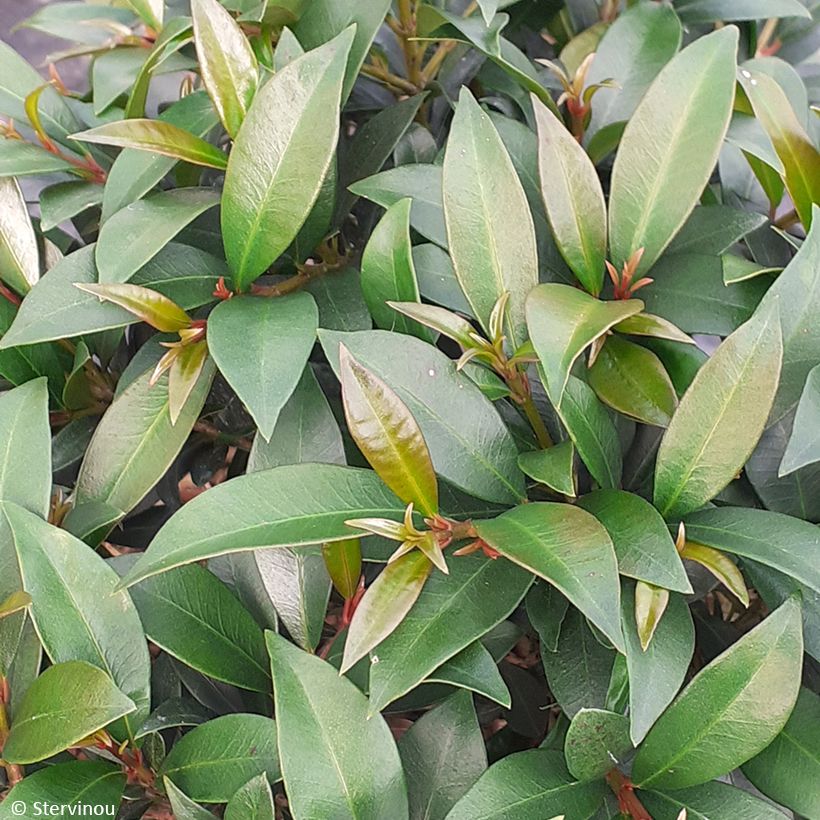

Plant habit
Flowering
Foliage
Botanical data
Eugenia
myrtifolia
Compacta
Myrtaceae
Australian Brush Cherry, Scrub Cherry, Creek Lily Pilly, Creek Satinash, Watergum, Wilson's Satinash
Eugenia uniflora Compacta
Cultivar or hybrid
Other Myrtus - Myrtle
Planting and care
Eugenia myrtifolia 'Compacta' will thrive in a loose soil, close to neutral, well-drained but remaining moist, especially in summer. Light soil, whether humus-bearing, slightly rocky or sandy, slightly acidic, neutral or even slightly chalky will do. It tolerates sea spray well. Plant it in the ground in spring, in a very mild climate. It will flourish in the sun or partial shade in a sheltered position away from cold winds. Under these conditions, it is hardy down to -5°C, for a short period. Wrap it in winter fleece in the coldest regions and protect it from the cold as much as possible. Place it in the warmest corner of the garden, in full sun, against a south-facing wall. In cold regions, it will be essential to grow it in a large pot to overwinter, in a bright but unheated room. To shape it, you can prune the stems in March-April or after flowering to encourage branching. This bush tolerates pruning well.
Container growing:
Ensure good drainage at the bottom of a large pot. Use a light substrate, enriched with leaf mould and add a bit of slow-release fertiliser in late winter and autumn. Water generously in summer, letting the soil dry out between waterings. The more you water, the more your bush will flower and bear fruit. This self-fertile variety does not require another plant nearby to fruit.
Planting period
Intended location
Care
This item has not been reviewed yet - be the first to leave a review about it.
Evergreen shrubs
Haven't found what you were looking for?
Hardiness is the lowest winter temperature a plant can endure without suffering serious damage or even dying. However, hardiness is affected by location (a sheltered area, such as a patio), protection (winter cover) and soil type (hardiness is improved by well-drained soil).

Photo Sharing Terms & Conditions
In order to encourage gardeners to interact and share their experiences, Promesse de fleurs offers various media enabling content to be uploaded onto its Site - in particular via the ‘Photo sharing’ module.
The User agrees to refrain from:
- Posting any content that is illegal, prejudicial, insulting, racist, inciteful to hatred, revisionist, contrary to public decency, that infringes on privacy or on the privacy rights of third parties, in particular the publicity rights of persons and goods, intellectual property rights, or the right to privacy.
- Submitting content on behalf of a third party;
- Impersonate the identity of a third party and/or publish any personal information about a third party;
In general, the User undertakes to refrain from any unethical behaviour.
All Content (in particular text, comments, files, images, photos, videos, creative works, etc.), which may be subject to property or intellectual property rights, image or other private rights, shall remain the property of the User, subject to the limited rights granted by the terms of the licence granted by Promesse de fleurs as stated below. Users are at liberty to publish or not to publish such Content on the Site, notably via the ‘Photo Sharing’ facility, and accept that this Content shall be made public and freely accessible, notably on the Internet.
Users further acknowledge, undertake to have ,and guarantee that they hold all necessary rights and permissions to publish such material on the Site, in particular with regard to the legislation in force pertaining to any privacy, property, intellectual property, image, or contractual rights, or rights of any other nature. By publishing such Content on the Site, Users acknowledge accepting full liability as publishers of the Content within the meaning of the law, and grant Promesse de fleurs, free of charge, an inclusive, worldwide licence for the said Content for the entire duration of its publication, including all reproduction, representation, up/downloading, displaying, performing, transmission, and storage rights.
Users also grant permission for their name to be linked to the Content and accept that this link may not always be made available.
By engaging in posting material, Users consent to their Content becoming automatically accessible on the Internet, in particular on other sites and/or blogs and/or web pages of the Promesse de fleurs site, including in particular social pages and the Promesse de fleurs catalogue.
Users may secure the removal of entrusted content free of charge by issuing a simple request via our contact form.
The flowering period indicated on our website applies to countries and regions located in USDA zone 8 (France, the United Kingdom, Ireland, the Netherlands, etc.)
It will vary according to where you live:
- In zones 9 to 10 (Italy, Spain, Greece, etc.), flowering will occur about 2 to 4 weeks earlier.
- In zones 6 to 7 (Germany, Poland, Slovenia, and lower mountainous regions), flowering will be delayed by 2 to 3 weeks.
- In zone 5 (Central Europe, Scandinavia), blooming will be delayed by 3 to 5 weeks.
In temperate climates, pruning of spring-flowering shrubs (forsythia, spireas, etc.) should be done just after flowering.
Pruning of summer-flowering shrubs (Indian Lilac, Perovskia, etc.) can be done in winter or spring.
In cold regions as well as with frost-sensitive plants, avoid pruning too early when severe frosts may still occur.
The planting period indicated on our website applies to countries and regions located in USDA zone 8 (France, United Kingdom, Ireland, Netherlands).
It will vary according to where you live:
- In Mediterranean zones (Marseille, Madrid, Milan, etc.), autumn and winter are the best planting periods.
- In continental zones (Strasbourg, Munich, Vienna, etc.), delay planting by 2 to 3 weeks in spring and bring it forward by 2 to 4 weeks in autumn.
- In mountainous regions (the Alps, Pyrenees, Carpathians, etc.), it is best to plant in late spring (May-June) or late summer (August-September).
The harvesting period indicated on our website applies to countries and regions in USDA zone 8 (France, England, Ireland, the Netherlands).
In colder areas (Scandinavia, Poland, Austria...) fruit and vegetable harvests are likely to be delayed by 3-4 weeks.
In warmer areas (Italy, Spain, Greece, etc.), harvesting will probably take place earlier, depending on weather conditions.
The sowing periods indicated on our website apply to countries and regions within USDA Zone 8 (France, UK, Ireland, Netherlands).
In colder areas (Scandinavia, Poland, Austria...), delay any outdoor sowing by 3-4 weeks, or sow under glass.
In warmer climes (Italy, Spain, Greece, etc.), bring outdoor sowing forward by a few weeks.

































